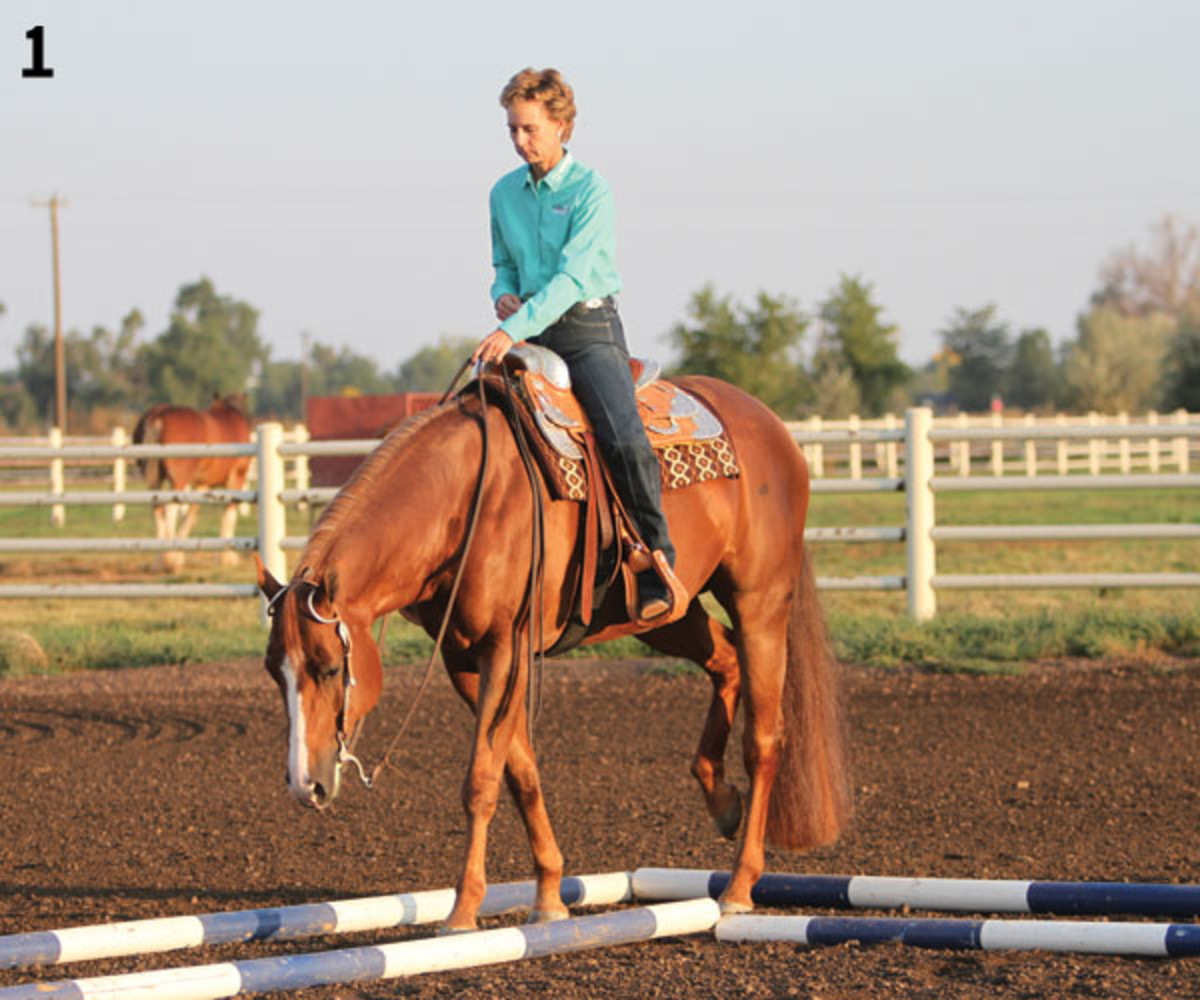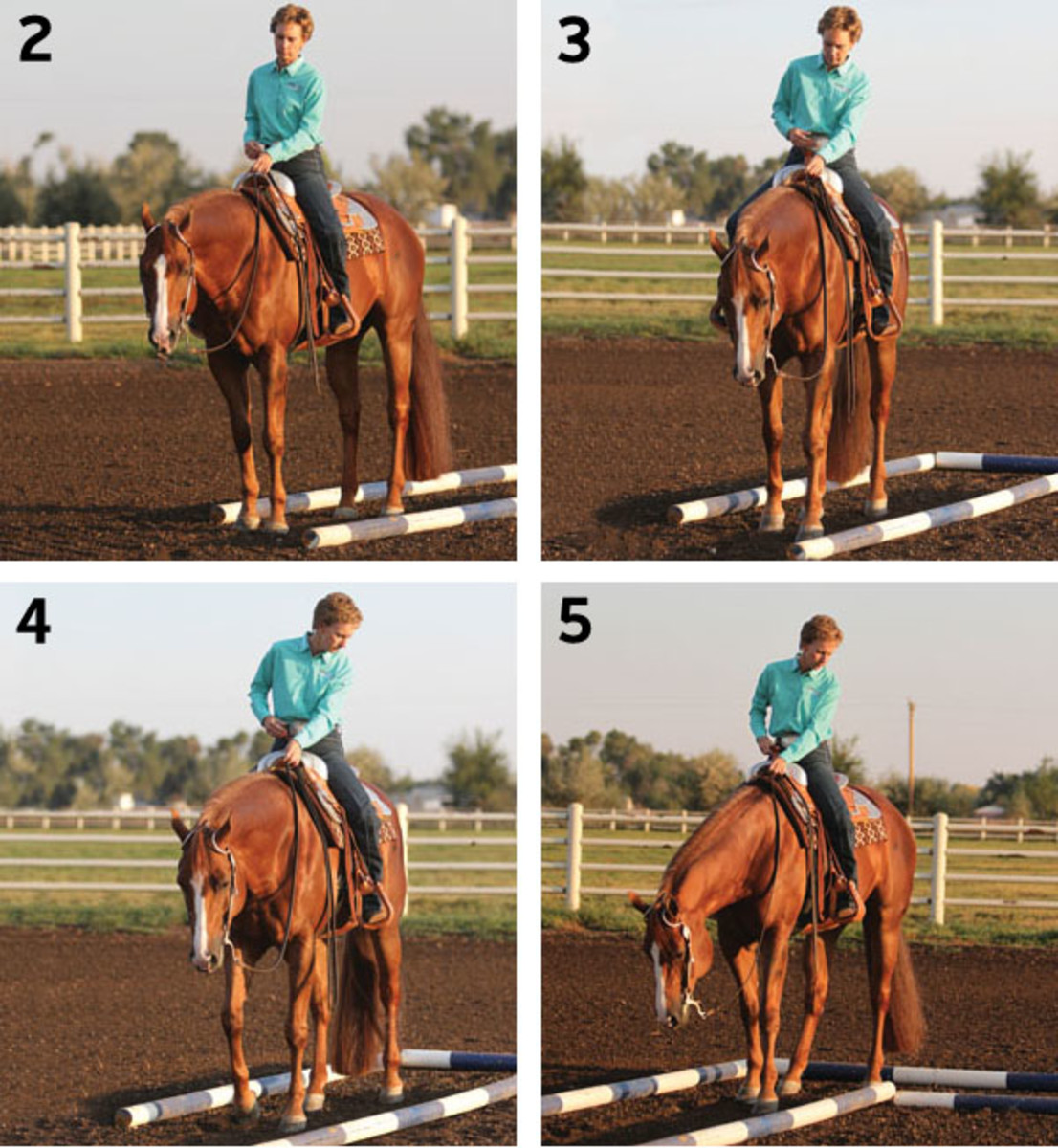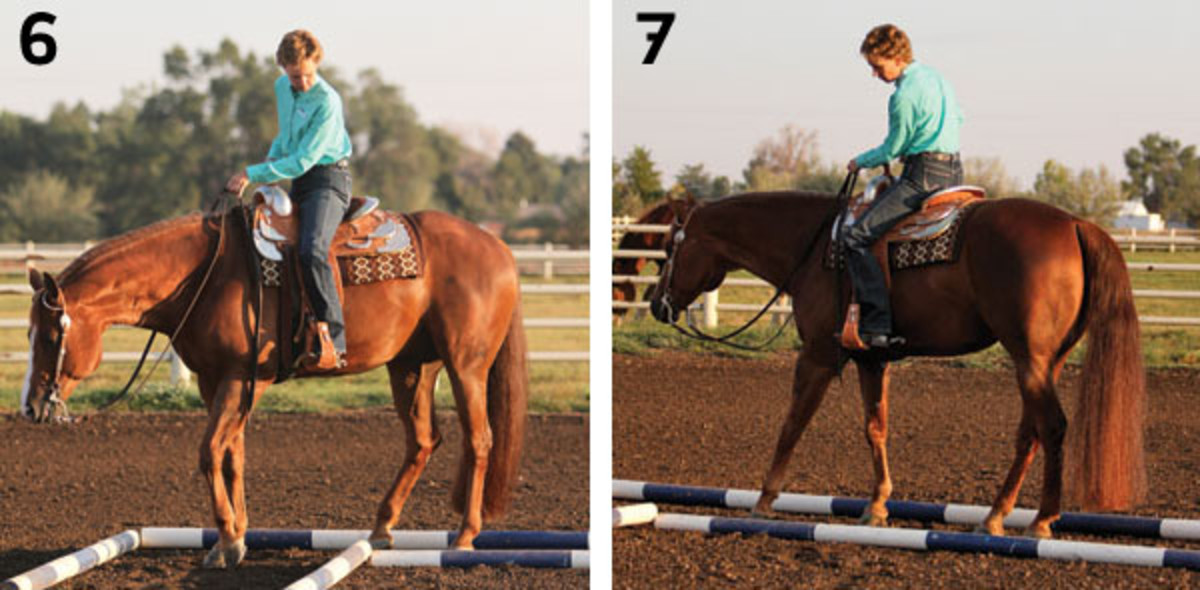Lesson Objective
If you compete: Use these position pointers to navigate the L-shaped back-through in your next trail class.
If you don’t: Setup the ‘L’ at home to work on your control in the saddle and your ability to get out of tight spots on the trail.
Most of the problems encountered in an L-shaped back-through are rider-created. Looking in the wrong place, glancing back and forth, rushing, and lack of spatial awareness all lead to ticked poles or even a destroyed obstacle.
Here, I’ve set up a 36-inch-wide ‘L’. I’ll demonstrate the three parts of the maneuver—the approach and entrance, the first chute, and the second chute—and and discuss each portion. When working at home, I suggest pausing after each of the three parts. At a show, do your best to complete the obstacle in one fluid motion, unless you need to slow down and regroup.
1. I enter the back-through squarely between the two parallel poles that make the first portion of the ‘L.” In this case, I’m walking in, but the pattern could call for a trotting entrance. One comment about my horse’s topline: This horse, like many other trail horses, drops his head below his withers to see what he’s doing, especially when walking or trotting over poles. As long as this low head carriage isn’t forced and the horse isn’t avoiding anything, the position is acceptable.

2. My horse and I are ready to start backing through the obstacle, but we’ve encountered a common problem: My horse isn’t centered between the poles before we start backing; he’s too far to his left. The first instinct might be to make the horse sidepass to his right to get centered; however, a sidepass step is too large, and he’d just wind up too close to the poles on his right, or hit them, which doesn’t solve anything.

3. Patience and focus are required when you have to problem-solve to figure out the best way to get your horse into correct position. I’ll ask my horse to back and use extra pressure from my left leg to ever so slightly move his hips away from the left-side poles. I can then straighten his shoulders to center with the next back-up step using left-rein pressure. Then we should be in good alignment to back straight through the rest of the first chute.
4. Throughout these first few backing steps, I keep my eyes on the left-side poles, because I can see how far I’ve moved away from them to gauge how far I am from the right-side poles. If I constantly look back and forth, I’ll unbalance my horse because of my weight shifting from one side to the other and back, which results in a crooked backup. My weight shifting could also confuse my horse when added to my intentional back-up cues.
5. When I near the turn of the ‘L,’ I stop my horse with his hind feet in the middle of the second chute. It puts me in perfect position to isolate my horse’s hindquarters and move his hind end to the left, through the 90-degree angle. Right-leg pressure behind the cinch cues my horse to step to his left with his hind legs. My slow, deliberate cues keep him from stepping too far or moving too quickly.
6. Next I isolate his forehand and move it around into alignment with his hindquarters, to be in position to complete the second chute centered between the poles for a straight backing exit from the obstacle.

7. As we back through the final chute, I’m careful not to let my horse rush out of the obstacle. The goal is to work at a continuous speed throughout the ‘L.’ If he does rush out when I’m practicing at home, I’ll walk him forward back into the second chute and try again…until he backs out of the chute in a relaxed, calm manner at a speed consistent with the one we used for the rest of the obstacle. n
Leslie Lange, Greeley, Colorado. A Colorado native and lifelong horsewoman, Lange is well respected for her skills training all-around horses. She’s an AQHA judge, as well as a national director for AQHA and NSBA. She’s trained and coached world champions and was the 2003 AQHA Professional Horsewoman of the Year.






